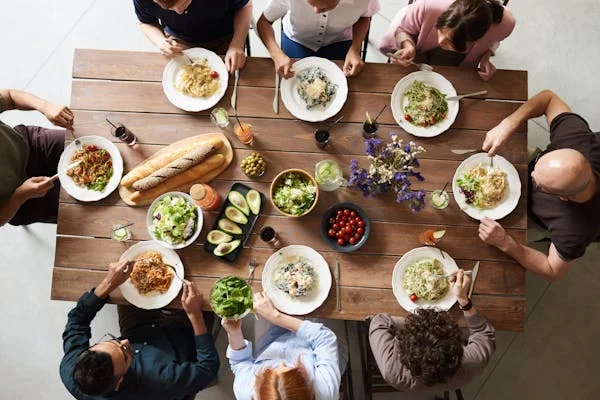Introduction
Chinatown hawker centers are known for their affordable, delicious, and diverse street food, attracting both locals and tourists. However, these bustling food hubs also face a growing challenge food waste. Every day, large amounts of food are discarded, including uneaten meals, unsold dishes, and excess ingredients.
The issue of Chinatown hawker leftovers consumption raises concerns about waste management, environmental sustainability, and economic losses. Finding solutions to reduce food waste and encourage responsible consumption is essential for both hawker vendors and the community.
This article explores the causes, effects, and potential solutions for Chinatown hawker leftovers consumption, highlighting strategies to reduce food waste while promoting sustainability.
The Importance of Hawker Centers in Chinatown
Hawker centers play a vital role in Chinatown’s social, economic, and cultural landscape. Their significance includes:
- Affordable Dining – Hawker food is budget-friendly, making it accessible to a wide range of people.
- Cultural Heritage – Many hawkers use traditional cooking methods passed down for generations.
- Tourist Attraction – Chinatown’s hawker centers are a major draw for visitors seeking authentic local cuisine.
- Community Interaction – These spaces serve as social gathering spots, strengthening community bonds.
Despite their importance, food waste is a major issue in Chinatown hawker centers, leading to economic and environmental concerns.
Understanding Food Waste in Chinatown Hawker Centers
1. Sources of Food Waste
The problem of Chinatown hawker leftovers consumption arises from various sources, including:
| Source | Description |
| Diners’ Leftovers | Customers often leave food unfinished due to large portions or changing preferences. |
| Unsold Cooked Food | Vendors prepare more food than they can sell, leading to surplus waste. |
| Ingredient Waste | Unused vegetables, meat, and expired products are discarded. |
| Disposable Packaging | Single-use utensils, plastic containers, and napkins add to overall waste. |
These factors contribute to significant food wastage, affecting both business sustainability and environmental health.
2. Environmental Impact of Food Waste
The environmental consequences of excessive food waste include:
- Increased Greenhouse Gas Emissions – Decomposing food releases methane, a gas that contributes to climate change.
- Landfill Overload – Large amounts of discarded food contribute to overflowing waste disposal sites.
- Wasted Resources – The water, energy, and labor used to produce and prepare food are lost when meals go uneaten.
Addressing Chinatown hawker leftovers consumption with better waste management solutions is essential to protecting the environment.
3. Economic Impact on Hawker Vendors
Food waste also affects the financial stability of hawker stall owners, leading to:
- Lost Revenue – Every unsold dish results in a financial loss.
- Higher Operational Costs – Increased waste disposal and ingredient purchases add to business expenses.
- Potential Price Increases – To recover losses, vendors may raise food prices, making meals less affordable.
By reducing waste, vendors can improve their profitability while keeping food prices accessible.
Solutions to Reduce Chinatown Hawker Leftovers Consumption
1. Food Donation Programs
One of the most effective ways to address Chinatown hawker leftovers consumption is through food donation initiatives. Unsold but safe-to-eat food can be distributed to:
- Low-income families
- Elderly individuals in need
- Homeless shelters and community kitchens
To ensure food safety, donation programs must follow guidelines such as:
- Proper storage and temperature control of donated food.
- Clear regulations on which types of food can be donated.
- Collaboration with licensed food redistribution organizations.
By donating excess food, hawker centers can support the community while reducing waste.
2. Reusing and Repurposing Leftover Ingredients
Hawkers can minimize waste by reusing excess ingredients in creative ways, such as:
| Leftover Ingredient | Repurposed Dish |
| Extra rice | Fried rice or congee |
| Unsold vegetables | Added to stir-fries or soups |
| Leftover noodles | Used in noodle broths or fried dishes |
| Cooked meats | Transformed into curry or new stir-fry dishes |
These methods help reduce food waste and lower ingredient costs for vendors.
3. Encouraging Customers to Reduce Waste
Consumer behavior plays a significant role in Chinatown hawker leftovers consumption. Encouraging responsible dining can reduce food waste through:
- Smaller Portion Options – Offering different serving sizes allows diners to order what they can finish.
- Promoting Takeaway Culture – Encouraging customers to take home leftovers instead of wasting food.
- Educational Campaigns – Posting signs and reminders about responsible food consumption.
When consumers order mindfully, less food goes to waste.
4. Implementing Food Waste Recycling Systems
Some hawker centers have introduced food waste recycling programs, including:
- Composting Initiatives – Turning food scraps into fertilizer for urban farms.
- Biogas Energy Projects – Processing waste into renewable energy.
- Livestock Feed Programs – Using suitable food waste to feed animals.
These recycling methods help reduce landfill waste while promoting sustainability.
5. Government Policies and Regulations
Local authorities play a crucial role in Chinatown hawker leftovers consumption by:
- Providing financial incentives for vendors who adopt sustainable practices.
- Implementing strict waste reduction policies at hawker centers.
- Supporting food redistribution efforts.
- Encouraging the use of biodegradable packaging instead of single-use plastics.
With stronger regulations, hawker centers can become more environmentally friendly.
Economic and Environmental Benefits of Waste Reduction
1. Economic Advantages
Minimizing Chinatown hawker leftovers consumption results in:
- Lower Costs for Vendors – Less waste means reduced ingredient and disposal expenses.
- Affordable Meals for Consumers – Managing waste effectively keeps food prices stable.
- More Food for Charitable Donations – Helping those in need while reducing waste.
2. Environmental Benefits
Reducing food waste leads to:
- Less Greenhouse Gas Emissions – Lower methane production from decomposing food.
- Better Resource Utilization – Saving water, energy, and labor in food production.
- Sustainable Business Practices – Creating eco-friendly hawker centers.
By adopting waste-reduction strategies, Chinatown hawker centers can contribute to a healthier environment and economy.
Future Strategies for Sustainable Food Consumption
To further improve Chinatown hawker leftovers consumption, future initiatives could include:
- AI-Based Inventory Tracking – Using technology to manage food stock more efficiently.
- Community Food-Sharing Platforms – Digital solutions to redistribute excess meals.
- Zero-Waste Business Models – Encouraging vendors to minimize waste in their operations.
- Stronger Public Awareness Campaigns – Educating consumers about sustainable eating habits.
By integrating technology and community-driven solutions, Chinatown can set a global example in sustainable food management.
Conclusion
The issue of Chinatown hawker leftovers consumption presents both challenges and opportunities. Food waste affects businesses, the environment, and local communities, making it essential to adopt sustainable food consumption practices.
By implementing food donation programs, ingredient repurposing, recycling systems, and government policies, Chinatown hawker centers can reduce waste, enhance business profitability, and support eco-friendly initiatives.
With collective action from vendors, consumers, and policymakers, Chinatown can lead the way in responsible food consumption, ensuring a sustainable and waste-free future.
FAQs on Chinatown Hawker Leftovers Consumption
What causes food waste in Chinatown hawker centers?
Food waste comes from diners’ leftovers, unsold food, excess ingredients, and disposable packaging, contributing to environmental and financial losses.
How can hawker centers reduce food waste?
Hawkers can minimize waste by donating excess food, reusing ingredients, offering smaller portions, and implementing food recycling programs.
What are the environmental effects of food waste?
Food waste contributes to greenhouse gas emissions, landfill overflow, and wasted natural resources, negatively impacting sustainability.
Can leftover food from hawker centers be donated?
Yes, leftover food can be donated to charities, homeless shelters, and low-income communities, following food safety regulations.
How can consumers help reduce food waste at hawker centers?
Consumers can help by ordering appropriate portions, taking home leftovers, and supporting vendors who follow sustainable practices.






